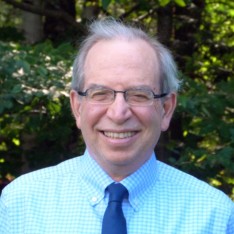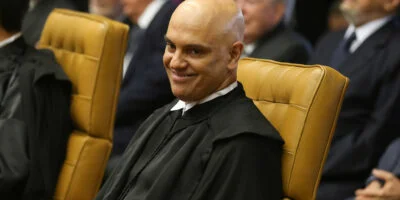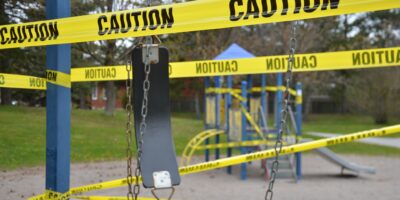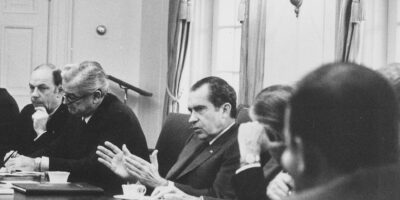Good Medicine Requires Second Opinions
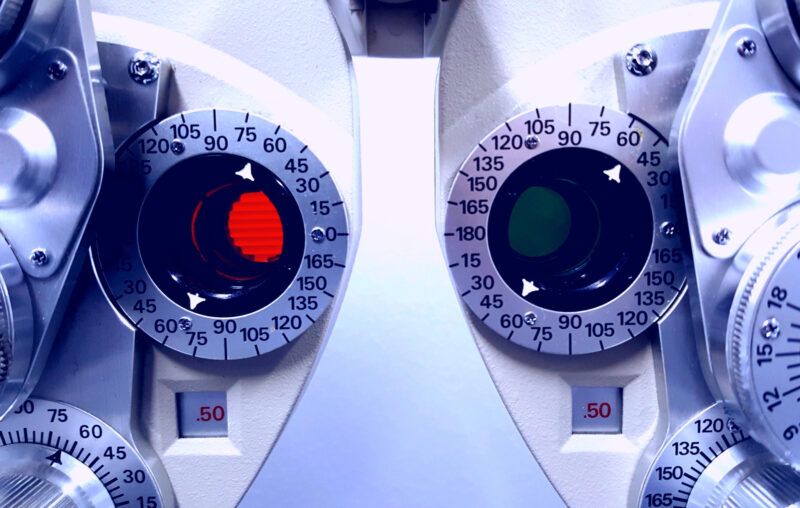
Above a tree line on the rugged trails of Mount Washington in New Hampshire, two hikers coming down the mountain called out in distress, “What trail are we on?” I answered and asked where they were headed. They were hiking a section of the Appalachian Trail. I explained they made a wrong turn at the trail intersection about 0.3 mile back up the trail.
They were puzzled. “What trail intersection? What sign?” they asked with agitation.
Realizing they had wandered off the trail, I encouraged them to follow me to the intersection to rejoin the Appalachian Trail.
Making faster progress than me, once again, they were wandering off the trail. I called out to them, and together as we made our way up the rugged slopes, I gave them updates on how far to the intersection.
My assurances weren’t enough. Another party of hikers was coming down the trail; again, the distressed hikers called out, “What trail are we on?”
I was not insulted. It is often wise to seek a second opinion. Accidents and even deaths are not rare on the trails of Mt. Washington.
In matters of health, it is especially wise to seek a second opinion. Nobel laureate in Economics Daniel Kahneman is famous for explaining systematic biases in decision-making. His new book Noise, written with Olivier Sibony and Cass Sunstein, brings to light the impact of noise on decisions. They explain the random nature of noise: “Some judgments are biased; they are systematically off target. Other judgments are noisy, as people who are expected to agree end up at very different points around the target.”
Forecasting is noisy. Reliable forecasts are made by people with a distinctive thinking style. Kahneman examines the mindset of what Philip Tetlock calls superforecasters. “Sheer intelligence” isn’t enough to be a superforecaster. What is essential is an “active open-mindedness” valuing evidence “that goes against their beliefs.” Superforecasters are in perpetual beta. Kahneman explains:
“To characterize the thinking style of superforecasters, Tetlock uses the phrase ‘perpetual beta,’ a term used by computer programmers for a program that is not meant to be released in a final version but that is endlessly used, analyzed, and improved. Tetlock finds that ‘the strongest predictor of rising into the ranks of superforecasters is perpetual beta, the degree to which one is committed to belief updating and self-improvement.’ As he puts it, ‘What makes them so good is less what they are than what they do—the hard work of research, the careful thought and self-criticism, the gathering and synthesizing of other perspectives, the granular judgments and relentless updating.’ They like a particular cycle of thinking: ‘try, fail, analyze, adjust, try again.’”
Judgements about Covid have been noisy. During the pandemic forecasts for the spread of Covid, the impact of masks, lockdowns, and other measures has been consistently wrong. This is not a surprise. As Kahneman reports, most forecasts are not reliable.
Dr. Fauci is not a superforecaster. There is little evidence that he works in “perpetual beta,” gathering and synthesizing perspectives. On the contrary, he attacks those he disagrees with, such as the authors of the Great Barrington Declaration. Real leaders listen to others; they don’t dominate others.
When it comes to the medical profession, we want to believe we can rely on our doctors. Many people want to believe Dr. Fauci.
Yet, the medical profession is especially noisy. Kahneman reports,
“Faced with the same patient, different doctors make different judgments about whether patients have skin cancer, breast cancer, heart disease, tuberculosis, pneumonia, depression, and a host of other conditions. Noise is especially high in psychiatry, where subjective judgment is obviously important. However, considerable noise is also found in areas where it might not be expected, such as in the reading of X-rays.”
Isn’t reading an X-ray or biopsy an objective fact on which nearly all competent radiologists and pathologists would agree? The answer is “No.” Kahneman explains:
“In some specialties, such as radiology and pathology, doctors are well aware of the presence of noise. Radiologists, for example, call diagnostic variation their “Achilles’ heel.”…Clean, simple tests of noise (and sometimes error) are easier to conduct in radiology. For example, you can return to scans or slides to reevaluate a previous assessment. In medicine, between-person noise, or interrater reliability, is usually measured by the kappa statistic. The higher the kappa, the less noise. A kappa value of 1 reflects perfect agreement; a value of 0 reflects exactly as much agreement as you would expect between monkeys throwing darts onto a list of possible diagnoses.”
Consumers of healthcare beware: “In some domains of medical diagnosis, reliability as measured by this [kappa] coefficient has been found to be “slight” or “poor,” which means that noise is very high.”
Kahneman provides examples: “On the question of whether a breast lesion was cancerous, one study found only “fair” agreement among pathologists. In diagnosing breast proliferative lesions, agreement was again only “fair.” Agreement was also “fair” when physicians assessed MRI scans for the degree of spinal stenosis.”
Women of childbearing years may be diagnosed with endometriosis. In one study, “108 gynecological surgeons…were asked to judge the number and location of endometriotic lesions. They disagreed dramatically, with weak correlations on both number and location.”
For a person diagnosed with cancer, a second or even third opinion would seem to be a necessity. Kahneman cautions, “Whether a patient will be diagnosed with a serious disease, such as cancer, might depend on a kind of lottery, determined by the particular doctor that she will see.”
It is not just that existing cancers escape diagnosis. Often cancer is “found” when none exists. For breast cancers, Kahneman notes, “false-positive rates ranged from less than 1% to 64% (meaning that nearly two-thirds of the time, the radiologist said the mammogram showed cancer when cancer was not present).”
Recommendations for heart surgery are noisy. Data reveals “that 31% of the time, physicians evaluating angiograms disagreed on whether a major vessel was more than 70% blocked. Despite widespread awareness by cardiologists of potential variability in reading angiograms, and despite continuing efforts and corrective steps, the problem has yet to be solved.”
The more benign forms of skin cancers such as basal cell have become a nuisance for many. Yet consequences of misdiagnosis of melanomas can be deadly. For melanomas, Kahneman reports “diagnostic accuracy… was only 64%.” Another study “found that dermatologists at New York University failed to diagnose melanoma from skin biopsies 36% of the time.” Since the removal of a melanoma before it spreads is essential, this failure “has grievous implications for survival of patients.”
If you’re a believer in early diagnosis through medical screenings, schedule your appointments in the morning. Another study found “doctors are significantly more likely to order cancer screenings early in the morning than late in the afternoon.”
Psychiatry is the noisiest of the medical specialties. “Highly trained specialist psychiatrists under study conditions were only able to agree that a patient has depression between 4 and 15% of the time.” Add to that the controversial nature of many psychotropic drugs, and it might be understandable why, for mental health, seeking care from a psychologist may be an advisable course of action.
After reading Kahneman, you will understand why seeking a second opinion is a wise course of action when faced with a serious health issue.
The best hospitals in the world, such as the Mayo Clinic, build second opinions into their diagnostic process by utilizing a team approach where world-class doctors are humble enough to consult with each other. When open-mindedness, self-criticism, and the gathering and synthesizing of perspectives are practiced, better health care can be expected.
Coercion Blocks Discovery
During this pandemic, open-mindedness, self-criticism, and the gathering and synthesizing of perspectives have been actively resisted. The “official” version on lockdowns, masks, and vaccines cannot be questioned. The news and social media actively censor opinions contrary to the “official” version, calling it misinformation. Treating Covid patients with ivermectin has been made very difficult.
And now the Federation of State Medical Boards (FSMB) is setting a policy to keep doctors in line with the “official” versions of health authorities. The FSMB has stated, due “to a dramatic increase in the dissemination of COVID-19 vaccine misinformation and disinformation by physicians and other health care professionals on social media platforms, online and in the media,” strict action is needed. They warn, “Physicians who willfully generate and spread COVID-19 vaccine misinformation or disinformation are risking disciplinary action by state medical boards, including the suspension or revocation of their medical license.”
President and CEO Humayun Chaudhry of the FSMB ominously added, “I hope that physicians and other licensees get the message.”
Will the FSMB adopt a YouTube-type standard to censor the dissemination of information on vaccines? Will they label as misinformation any views “that contradicts local health authorities’” or the World Health Organization’s (WHO)?”
If a person experiences Bell’s palsy after taking the first dose of the vaccine, would it be advisable to get a second shot? Apparently, a physician who advises a patient not to get a second shot would violate official guidance. How about a teenager who experienced myocarditis after their first shot? Again, official guidance is to get the second shot. The FSMB policy puts physicians in an ethical dilemma and incentivizes self-censorship.
Are one-size-fits-all health policies consistent with what we know about biochemical individuality (explained in this essay)? Would a physician face disciplinary action for considering the patient’s age, occupation, underlying health, diet, and exercise pattern when advising on vaccination?
Israel has vaccinated 65% of the population. Is it misinformation to report the Israeli experience of dramatically falling vaccine efficacy for the Pfizer vaccine? Of Covid hospitalizations, the current Israeli experience is that “95% of the severe patients are vaccinated.” Is that misinformation because it seems to run counter to the official narrative?
Is it misinformation to present evidence to question Dr. Fauci, who now wants to deploy booster shots, initially for “at-risk” individuals?
The FSMB policy on the dissemination of Covid-19 information is censorship disguised as quality control. State Boards have never been interested in protecting patients; their interest has always been in protecting doctors.
Medical licensure has been used as a tool to reduce competition and lower the quality of healthcare. In Capitalism and Freedom, Milton Friedman explains why, “It is clear that licensure is the key to the medical profession’s ability to restrict the number of physicians who practice medicine.” He adds,
“I am myself persuaded that licensure has reduced both the quantity and quality of medical practice; that it has reduced the opportunities available to people who would like to be physicians, forcing them to pursue occupations they regard as less attractive; that it has forced the public to pay more for less satisfactory medical service, and that it has retarded technological development both in medicine itself and in the organization of medical practice.”
Capitalism and Freedom was published in 1962 but even then, Friedman observed how the profession stifled innovation: “If you are a member of the profession and want to stay in good standing in the profession, you are seriously limited in the kind of experimentation you can do.”
Before Covid, famed Johns Hopkins physician Marty Makary wrote Unaccountable: What Hospitals Won’t Tell You and How Transparency Can Revolutionize Health Care. The unwillingness of the medical profession to root out incompetent physicians and those physicians with addictions prompted Makary’s book.
Makary left medical school after seeing a patient die from an operation she didn’t want or need. He observes that healthcare is “an industry that does not abide by the same principles of accountability for performance that govern other industries. Instead, our health care system leaves its customers walking in blind. All while simply rewarding doctors for doing more.”
Eventually, returning to finish medical school, Makary has become a leading reformer. During the pandemic, Makary has challenged the orthodoxy on masks, herd immunity, and natural immunity.
In his book, Makary reports on how medical boards, hospital administrators, and other doctors protect their profession and fail to root out bad doctors. He observes there are “grossly impaired physicians, doctors with horrible skills, hazardous judgment, ulterior motives, or who suffer from substance-abuse or other problems that make them dangerous. Society ought to be able to deal with this better, not sweep it all under the rug.”
Indeed, Makary “never heard of anyone losing their license from a state medical board’s action.” Makary points to California:
“The Medical Board of California, like all others, is responsible for licensing and disciplining physicians. On three different audits conducted during the 1980s, the California auditor general found that the board wasn’t doing its job. Apart from that announcement, no further action was taken. The board went eighteen years without another audit until 2003, when University of San Diego Law School professor Julie D’Angelo Fellmeth became the medical board enforcement monitor. Then she blew a whistle. Testifying to a Senate committee in 2008 after years of trying to sound alarms, she said the Medical Board of California routinely ‘failed to promptly remove from work physician participants who tested positive for prohibited substances.’
The board had five out of five failed audits. Still, rather than address the substance abuse among its staff, it instead decided to terminate its physician substance-abuse program completely.”
In short, Makary considers how licensing boards mainly serve “the interests of their stakeholders—doctors:”
“The license legally allows us to do anything in medicine. But unlike with a driver’s license, you can screw up royally yet never lose your license to practice medicine. Even doctors in rehab who test positive for illegal drugs or are arrested can keep their licenses and continue to diagnose, prescribe, and operate as before. Unbeknownst to the public, surgeons can be arrested for driving drunk or stoned and then go into surgery the next day. A doctor might not be able to legally drive his car to the hospital, but once he gets there, he can open up your chest for surgery.”
Sue Blevins writes, “Once medical professionals are licensed, there are no requirements for proving that they are fully trained to perform the most up-to-date procedures.”
Makary writes, “Every doctor knows at least one other doctor who is too dangerous to be practicing.” Consider this example of how the profession covers up for doctors who kill:
“This surgeon had six consecutive deaths during routine bypass surgery. One time, right after this notoriously bad surgeon’s run of six deaths, my friend was administering anesthesia for him. In front of all the operating-room nurses and technicians, the patient asked my friend before going off to sleep, ‘Is my surgeon a good surgeon?’ The operating-room staff froze as their eyes popped out of their heads. They stared at my friend to see how he would deal with the direct question. ‘He’s one of the four best heart surgeons we have here,’ he said with a smile.”
There were only four heart surgeons in this hospital.
Boards who have turned their backs on incompetent and addicted doctors are now threatening doctors who differ from the Covid vaccine orthodoxy.
Makary reports, “The vast majority of major medical mishaps result from breakdowns in communication.” In many organizational cultures, nurses are rewarded for following orders, and self-censorship is rampant. He explains,
“The hospital can be an intimidating place for a health care worker. It has a strong hierarchy. Following orders promptly is valued the same way it is on the battlefield. Defiance is unheard of and punishable with harsh penalties. The nurses and residents taking the orders often don’t have as much expertise as the ordering doctors and might question their own knowledge if they are feeling something isn’t right.”
Censorship and self-censorship kills. Bad ideas only drive out good ideas when bad ideas are granted legal tender. The FSMB is strangling the medical discovery process and threatening the health of those they claim to be protecting.
The medical profession is noisy; we should not expect infallibility. We should not expect people to agree. We should value active open-mindedness to challenge the orthodoxy and promote discovery. The history of medicine has been filled with dubious and dangerous treatments, along with life-saving discoveries. In the 1920s drinking water infused with radium was hailed as “one of the greatest boons to ailing mankind that ever was discovered. In matters of health, competition and second opinions lead to better medicine.

